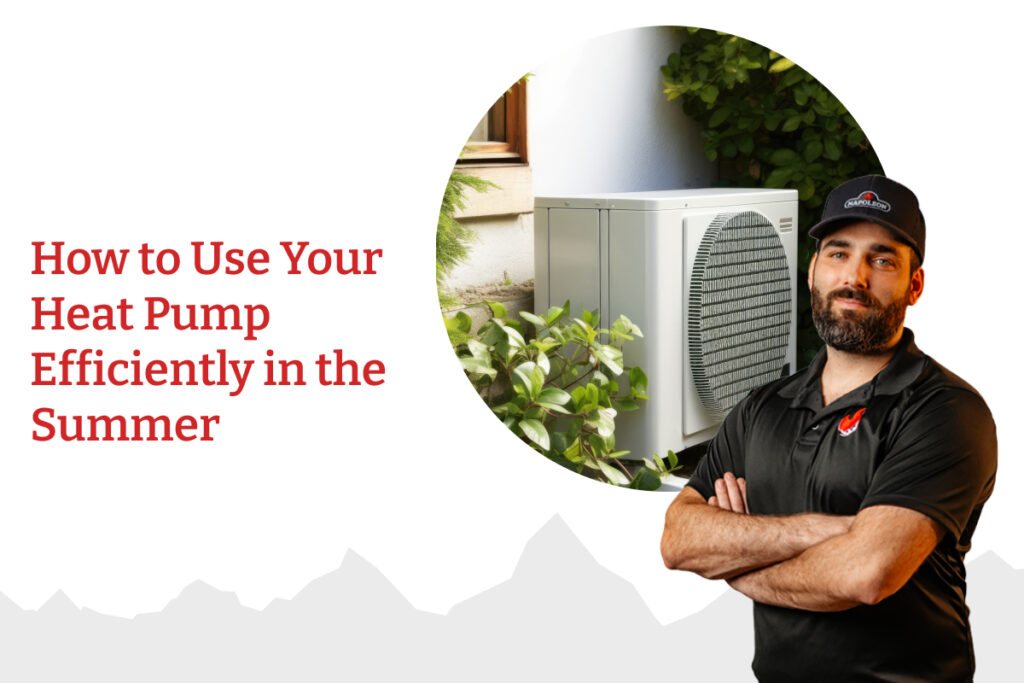Heat pumps are becoming an increasingly popular choice for Canadian homeowners due to their ability to provide both heating and cooling in one system. During summer, your heat pump functions just like an air conditioner—removing heat from your home and circulating cooler air indoors. However, to get the best performance without wasting energy, it’s essential to know how to use your heat pump efficiently. Whether you’re upgrading to a new system or fine-tuning the one you already have, proper summer usage can significantly improve comfort and lower your energy bills. To ensure optimal performance, Whyte Ridge offers professional heat pump services in Winnipeg tailored to our unique Prairie climate.
Maximizing summer efficiency starts with understanding how your heat pump works and making a few smart adjustments to your home and habits. From thermostat settings to fan use, every detail plays a role in ensuring your home stays cool without straining the system—or your wallet.
Set Your Thermostat Smartly
One of the simplest and most effective ways to use your heat pump efficiently in the summer is to maintain a consistent thermostat setting. A good starting point is around 24–25°C when you’re home. Avoid setting it too low, as this can cause the system to work harder than necessary. Sudden changes or frequent adjustments can reduce efficiency and lead to more wear and tear.
If you’re out of the house during the day, raising the temperature by about 3–5°C will help conserve energy without letting your home become uncomfortably warm. A programmable or smart thermostat makes this process seamless. Many models can learn your schedule and make automatic adjustments, keeping your home comfortable when you need it and reducing energy consumption when you don’t.
Use Fans to Support Airflow
Ceiling and portable fans can be excellent allies in your quest for efficient cooling. Fans help distribute cooled air more evenly throughout your home, allowing you to raise the thermostat a few degrees while maintaining the same level of comfort. This not only eases the load on your heat pump but also helps reduce electricity use.
Make sure your ceiling fans are set to spin counterclockwise in the summer. This direction pushes cool air downward, creating a wind-chill effect that makes rooms feel cooler without actually lowering the temperature.
Block Out Heat Sources
Minimizing heat gain from the sun and other sources can dramatically improve your heat pump’s efficiency. Close blinds or curtains during peak sun hours—typically mid-morning to late afternoon—especially on south- and west-facing windows. Light-coloured, reflective window treatments are especially helpful in keeping solar heat out.
Appliances like ovens and clothes dryers also add heat to your home. Try to limit their use during the hottest times of the day. Cooking outdoors, using a microwave, or doing laundry in the evening can all help your cooling system work less.
Keep Doors and Vents Open
Contrary to popular belief, closing doors or vents in unused rooms does not improve efficiency. In fact, restricting airflow can increase pressure in the ductwork, leading to reduced performance and potential damage over time. Allow your system to circulate air freely throughout your home for consistent cooling.
Additionally, make sure return air vents are not blocked by furniture, rugs, or clutter. Clear airflow is vital for your heat pump to function as designed.
Don’t Forget Routine Maintenance
Like any HVAC system, your heat pump requires regular maintenance to perform efficiently. Dirty filters, clogged coils, and low refrigerant levels can all reduce cooling power and increase energy usage. Check your air filter every month and replace it at least every three months—or more often if you have pets or allergies.
At least once a year, ideally before the summer cooling season begins, schedule a professional inspection. A technician will clean critical components, check refrigerant levels, inspect wiring and ductwork, and ensure everything is working safely and efficiently. Environment and Climate Change Canada recommends proper HVAC maintenance as part of its energy-saving and sustainability initiatives, which also contribute to reducing your home’s carbon footprint.
Understand Climate Compatibility
If you’re wondering whether a heat pump can truly handle Manitoba’s extreme conditions, you’re not alone. There’s still some confusion about how these systems perform during hot Prairie summers. Do Heat Pumps Work Well in Manitoba Summers? explores this topic in-depth, offering clarity on their effectiveness and the technology behind modern models built for our climate.
Upgrade Older Thermostats or Systems
If your heat pump system is more than 10 years old, or if you’re still using a manual thermostat, you may be missing out on significant efficiency gains. Upgrading to a smart thermostat offers real-time monitoring, remote access, and detailed energy usage reports that help you fine-tune your cooling schedule.
Likewise, newer heat pump models often feature variable-speed compressors, which adjust cooling output in real time to match indoor conditions. This reduces energy spikes and improves humidity control—a major comfort factor during humid Prairie summers.
Recognize When Help Is Needed
Even the most efficient systems can experience issues. If your heat pump is blowing warm air, cycling on and off frequently, or struggling to maintain the set temperature, it may be time for a service call. Ignoring these signs can lead to more serious problems and higher utility bills.Whyte Ridge’s expert team is always ready to assist with diagnostics, repairs, and seasonal tune-ups to ensure your heat pump operates at peak performance all summer long. If you’re experiencing issues or want to schedule a professional inspection, don’t hesitate to contact us today.
